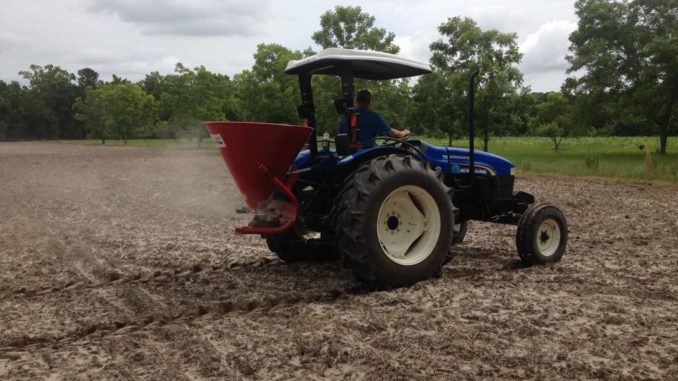
Landowners expanding their food-plot acreage are making a move into the right direction to get more wildlife using their properties on a regular basis.
Food-plots planted with crops rich in nutrition and energy will provide wildlife with an ideal food source during critical times of need. Most properties across the Carolinas will have a variety of foods available throughout the four seasons from adjacent agriculture practices and native vegetation. But the availability and nutritious component of many of the native plants will vary tremendously.
As landowners expand their cultivated acreage to attract more wildlife, new food plots may experience a learning curve they start producing their highest potential. Landowners with access to a farm-supply store and a granulated spreader can sweeten the pot and allow plots to reach their potential much sooner.
To start off with, new plots should be checked out by the soil doctor to determine pH and chemistry. Soil samples should be collected and sent to the lab for analysis. Typically, new plots converted from a prior forest use, especially pine and oak forests, will have very acidic soils with a pH level of less than 5.0. Lime should be added to raise soil pH immediately.
But soil acidity is not the only thing that will require correction. Newly-cleared plots will be very low in phosphorus and potassium. These elements are critical for plant vigor, growth and survival in the South’s harsh environmental fluctuations. Phosphorus is required to convert nitrogen into usable plant energy, and potassium regulates water usage as well as other duties. Supplements of phosphorus and potassium will be critical before the first planting and are usually applied in large quantities.
Beyond the normal soil additions, one nutrient comes to mind that many food-plot growers miss out on and fail to apply. Sulfur is one of the most-important nutrients for growing strong, healthy food plots, and it is often omitted from the fertilization schedule that it is often the hidden reason for a failed plot.
Sulfur is required in all living cells, including both animals and plants. In plants, sulfur is a limiting agent in the production of proteins, enzymes and vitamins that help plants resist disease, promote growth, and play a major part in seed formation. Without sulfur, plants will not be able to utilize nitrogen effectively. Nitrogen is responsible for creating large, green leaves and stems as well as other parts. Without sufficient sulfur in the soil, the expensive nitrogen amendments will leach away without being utilized by the plants.
All new food plots should receive a reasonable does of sulfur during fertilizing at a rate of 15 to 20 pounds per acre. Sulfur can be added as a component ingredient in other fertilizer treatments, including potassium sulfate or ammonium sulfate. In sandy soils on previously farmed or new plots, sulfur will be lacking and will need an annual maintenance doses of 15 to 20 pounds per acre.
No doubt, a collection of food plots growing a strong stand of thick, hearty greenery will increase the carrying capacity of a specific area. Make sure to add the proper soil amendments before planting any food plot.




Be the first to comment